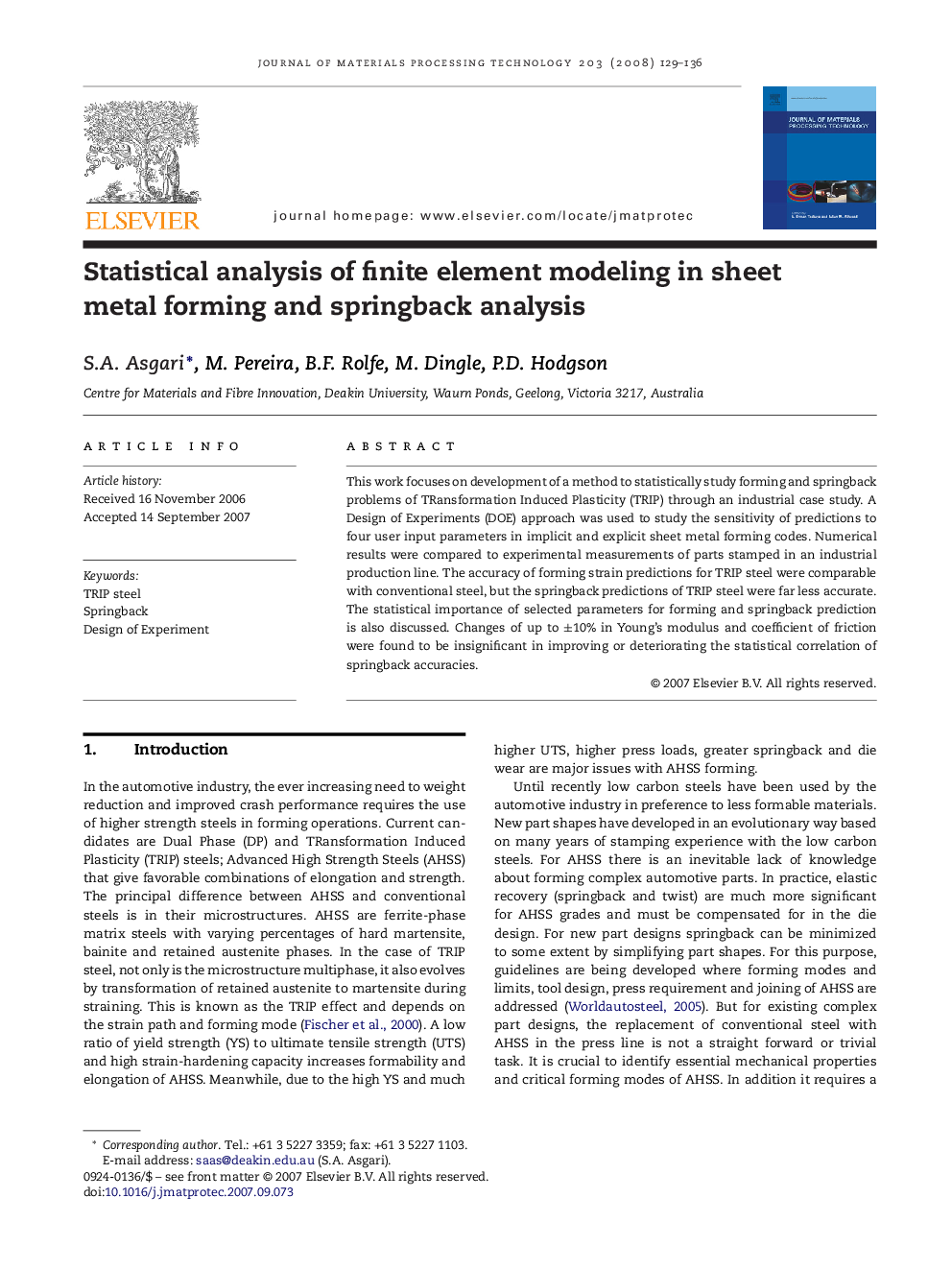| Article ID | Journal | Published Year | Pages | File Type |
|---|---|---|---|---|
| 795329 | Journal of Materials Processing Technology | 2008 | 8 Pages |
This work focuses on development of a method to statistically study forming and springback problems of TRansformation Induced Plasticity (TRIP) through an industrial case study. A Design of Experiments (DOE) approach was used to study the sensitivity of predictions to four user input parameters in implicit and explicit sheet metal forming codes. Numerical results were compared to experimental measurements of parts stamped in an industrial production line. The accuracy of forming strain predictions for TRIP steel were comparable with conventional steel, but the springback predictions of TRIP steel were far less accurate. The statistical importance of selected parameters for forming and springback prediction is also discussed. Changes of up to ±10% in Young's modulus and coefficient of friction were found to be insignificant in improving or deteriorating the statistical correlation of springback accuracies.
